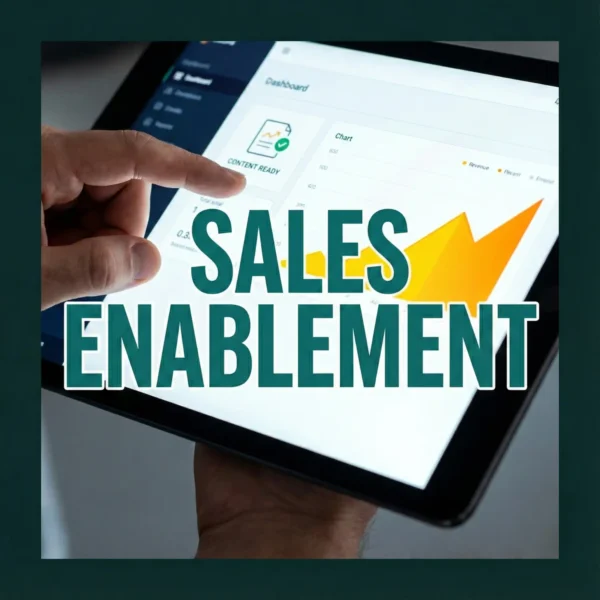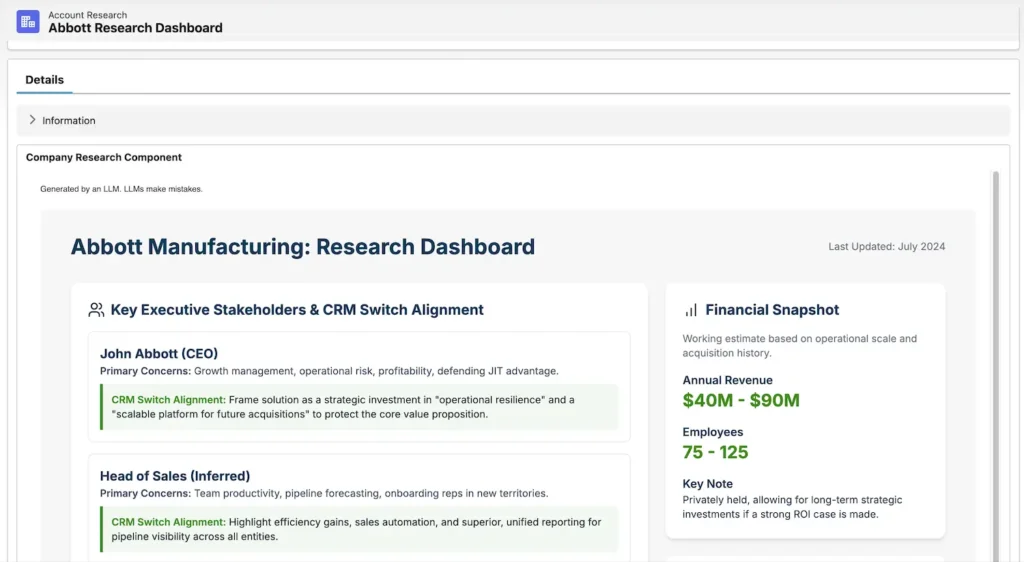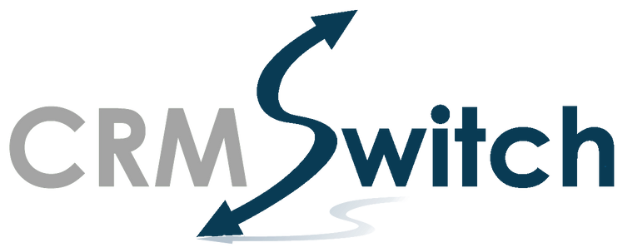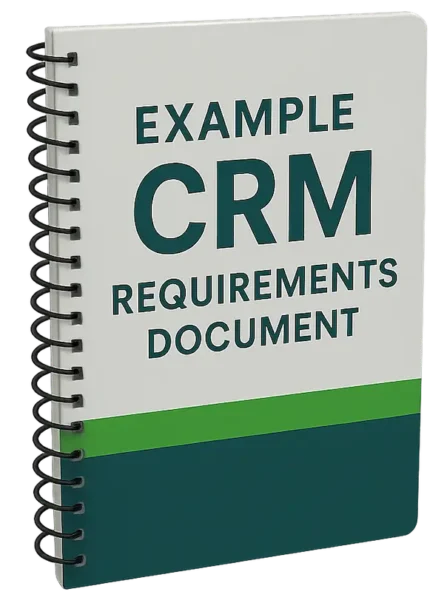B2B sales enablement is the practice of equipping sales teams with the tools, content, data, and training they need to close deals more effectively and efficiently.
When properly implemented, sales enablement functionality inside a CRM platform bridges the gap between marketing and sales teams, ensuring that reps have access to relevant, timely information throughout the buyer’s journey.

For a sales team to thrive, every member must be aligned around a shared enablement strategy that prioritizes productivity, personalization, and performance.
While there are standalone sales enablement tools, separate from CRM, it’s worth considering what CRM can offer.
Maximizing sales enablement within a CRM can involve a combination of configuration, customization, and one or more third-party add-ons.
Quickly Locating Digital Assets
When properly structured, a CRM system can serve as an effective internal search engine for locating digital assets relevant to specific sales scenarios.
Examples of these assets are brochures, videos, proposal templates, email templates, and slide decks. Videos can be customer-facing and internal-only, such as training videos.
Example: During a conversation, a prospect brings up a competitor they’re evaluating. The salesperson asks themself, “Where do I find that battle card we created?” Ideally, the seller can pull up the card in real time and address the prospect’s concerns.
This prevents sellers from wasting time looking around for the latest version of an asset or, worse, creating a redundant one from scratch.
Easier Access to Customer Pricing
For some sales organizations, finding the correct pricing to send to a customer or prospect involves a series of emails and phone calls to customer service or the finance department. A delayed response to a prospect’s pricing request can be a deal breaker.
We worked with a company where the current pricing for specific items was locked up in an ERP system. The business requirement to better enable salespeople was to surface that information in a CRM system to enable fast turnaround on price quotes.
Enrolling Leads In Nurture Sequences
Suppose the marketing team creates a series of valuable emails for the company’s audience. In that case, salespeople can enroll non-responsive leads in sequences, allowing reps to spend more time focusing on warmer leads.
If a nurture sequence warms up a lead, the assigned SDR or salesperson can resume personalized outreach.
Example: The marketing team has just imported a large number of new Leads from a trade show. Some will be marked as hot and added to a call list, while others will be tagged for inclusion in a trade show follow-up list, where they will receive a sequence of emails informing them that show specials have been extended for 30 days.
Using Predeveloped 1:1 Email Templates
Another area in which salespeople don’t have to ‘reinvent the wheel’ is when they have easy access to a repository of 1:1 email templates. The templates should include merge fields for the salesperson’s signature and a meeting link.
Your sellers have (or should have) a defined process for contacting, qualifying, and selling. With email templates, they can have the right message at their fingertips to send at the right time.
They can open a Contact record and send the template; the name, email address, seller’s contact information, and calendar link are automatically inserted.
- Follow-up from trade show visit
- Follow up after a demo
- A ‘Here is your quote’ email
Ideally, the best template to use at any point will be determined by the details of the previous interaction with a prospect or customer.
Leverage Lead Scoring Data
Company– and contact-level lead scoring can signal to salespeople which individuals to prioritize, focusing on those in targeted company roles and those most engaged with company content and messaging.
For one of our clients, they wanted their sellers to see a ⭐ next to any leads associated with Directors, Vice Presidents, and C-level contacts. Now, when the big list of leads is viewed, it’s easy to find what they consider the ‘heavy hitters’ fast.
This enables salespeople to make inroads into an account by starting with those most likely to understand the value proposition.
Access to Big Data Sources Like ZoomInfo
Popular CRM systems, such as HubSpot, Salesforce, Microsoft Dynamics 365, and SugarCRM, all integrate with ZoomInfo.
ZoomInfo is a B2B platform that collects, verifies, publishes, and updates contact and company profiles to provide its customers with more accurate and comprehensive data.
Salespeople can get access to key contacts that were missing from the CRM database. Existing contacts can be enriched with current information.

Embed Company Research Dashboards in Account Records
For reps who sell into larger accounts, an easy-to-consume company research dashboard is valuable for meeting planning and follow-up activities.
An LLM can be used to conduct deep research into a prospective customer’s leadership team, business approach, financials, strengths, and weaknesses.

Prompting for this information and embedding a strategic dashboard, along with other formats, in company records can be the job of a researcher in the revenue operations department.
A Product Launch Calendar
Some companies continually introduce new items. Salespeople need to contact Product Managers to obtain necessary information, such as the launch date and product specifications.
As part of a sales enablement effort, the marketing team can provide an updated Product Launch Calendar, which will be presented as a hyperlink on the CRM home page. With one click, sales users have access to the information they need.
Stock Status Reporting in CRM
Salespeople working for manufacturers and distributors often need to know the current stock levels of various products when speaking with customers.
ERP licenses are expensive. Additionally, sellers prefer not to learn how to navigate an ERP.
Instead, a ‘Stock Status Report’ can be created in CRM, which is a simple listing of out-of-stock items updated regularly from the ERP. This report informs sellers about what is out of stock and when it is expected to be replenished.
This means no more having to call customer service to check on a product’s availability.
B2B sales enablement is a broad topic. What works for one organization may not work for another.
The forms of sales enablement within a CRM system should be based on understanding what has worked best in prior sales situations and defining system requirements from there.
Sales Enablement FAQs
B2B sales enablement is the practice of providing sales teams with the necessary tools, content, data, and training to close deals more effectively and efficiently.
It’s crucial because it bridges the gap between marketing and sales, ensuring sales representatives have access to relevant, timely information throughout the buyer’s journey, ultimately leading to increased productivity, personalization, and performance.
A CRM system can significantly enhance sales enablement by serving as a central hub for various functions.
It can act as an internal search engine for digital assets, provide easy access to customer pricing, allow for the enrollment of leads into nurture sequences, offer predeveloped 1:1 email templates, leverage lead scoring data, integrate with big data sources like ZoomInfo, embed company research dashboards, provide a product launch calendar, and offer stock status reporting.
A properly structured CRM system can function as an effective internal search engine for digital assets such as brochures, videos, proposal templates, email templates, and slide decks.
This prevents salespeople from wasting time searching for the latest versions of assets or creating redundant ones, allowing them to quickly access and utilize information like competitor battle cards during conversations or immediately afterward.
A CRM streamlines communication by enabling salespeople to enroll non-responsive leads in marketing-created nurture sequences, freeing up reps to focus on warmer leads.
It also provides a repository of predeveloped 1:1 email templates with merge fields, enabling salespeople to send the right message at the right time with automatically inserted details, such as the prospect’s name and the seller’s contact information.
Lead scoring, at both the company and contact levels, signals to salespeople which individuals to prioritize based on their roles and engagement.
This helps them focus on “heavy hitters” who are more likely to understand the value proposition. Additionally, CRM integration with big data sources like ZoomInfo enables salespeople to identify key contacts that may be missing from the database and to enrich existing contacts with up-to-date information, providing a more comprehensive view of prospects.
A CRM can embed easy-to-consume company research dashboards in account records, which can be generated using LLMs (Large Language Models) to conduct deep research into a prospective customer’s leadership, business approach, financials, strengths, and weaknesses.
Furthermore, for companies with frequent new product introductions, the marketing team can provide an updated Product Launch Calendar as a link on the CRM home page, giving sales users instant access to launch dates and product specifications.
For sales teams dealing with physical products, a CRM can provide real-time stock status reporting by regularly updating a simple listing of out-of-stock items from an ERP system.
This eliminates the need for salespeople to call customer service to check product availability and also provides expected replenishment dates. Similarly, CRMs can surface current customer pricing that might otherwise be locked in an ERP system, enabling faster turnaround on price quotes.



